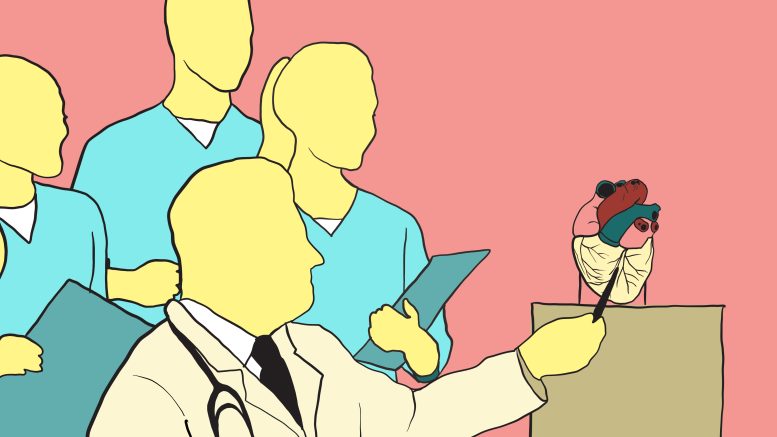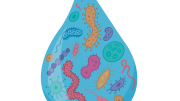There is a misconception among the general public that women do not have heart attacks.
In the media, heart attack patients are most often portrayed with classic heart attack symptoms such as chest pressure and heaviness. Women often experience lesser-known heart attack symptoms including sharp pain in the jaw, back or other areas, nausea or shortness of breath.
This misrepresentation can lead women to avoid seeking medical attention, thus delaying diagnosis and treatment.
U of M assistant professor in the Max Rady college of medicine and interventional cardiologist Shuangbo Liu emphasized the importance of patients seeking help for a possible heart attack immediately.
“When it comes to a heart attack, definitely every minute counts,” she explained.
Women’s heart health is an important pillar of Liu’s research.
As a clinician scientist, she mostly studies spontaneous coronary artery dissection (SCAD), which is when a tear occurs in the lining of a blood vessel in the heart, causing poor blood flow to the heart and potentially resulting in a heart attack. About 80 per cent of her clinical patients have this condition.
The condition occurs about nine times more frequently in females than in males.
SCAD has symptoms that are similar to a heart attack, such as chest pain and shortness of breath. It often occurs when patients are relatively young, usually in their early 40s.
Moreover, SCAD patients often lack pre-existing risk factors for heart disease, such as diabetes or high blood pressure.
People who feel that they are not at risk for heart issues might be less likely to seek help for heart attack-like symptoms.
This particularly affects women, young people and those who are otherwise healthy. These groups are also more likely to believe that their symptoms will go away if they just ignore them.
Elderly people, who often have atypical heart attack symptoms, may also delay in seeking medical attention.
SCAD also requires more specialized care than other heart conditions. The condition is somewhat rare, which is why Liu is setting up a local registry of SCAD cases with details on their treatment and outcomes.
The local registry can be compared to registries like it in other areas, thus increasing the knowledge of the scientific community.
Liu is also part of a public awareness campaign called “Dial, Don’t Drive,” which encourages patients to call 911 as soon as they start experiencing symptoms of a heart attack instead of attempting to drive themselves to the hospital. This allows those suffering from a heart attack to begin receiving medical care as soon as emergency services reach them, instead of upon arrival at a hospital.
The awareness campaign is taking place on social media, in newspapers and even through bus ads.
Liu said that according to local data, about 53 per cent of Winnipeggers who had a heart attack called 911. This means that nearly half of patients had their treatment delayed by driving themselves or having a family member drive them to the hospital.
Liu also supports an event called Wear Red Canada, which seeks to raise awareness about women’s cardiovascular health. Every year on
Feb. 13, participants wear red clothes and attend events that discuss and raise awareness concerning heart issues that women face.
Initiatives such as these are important because delaying treatment can have serious consequences for heart attack victims.
If the affected artery in a heart attack is completely blocked, leaving it untreated can result in permanent damage to the heart muscle. Patients might also have heart failure and may die without proper care.
Some people feel that they cannot control the possibility of having a heart attack because of their age or family history. However, Liu explained that this is not the case, and advised that risk can be reduced through exercise, maintaining a healthy diet and avoiding smoking and excess alcohol consumption.
Although the general public may lack knowledge about heart attacks, physicians are trained to recognize atypical symptoms. Advanced diagnostic tools can detect even very minor heart attacks.
However, scientists are still unsure about why males and females present with heart attack symptoms differently.
This question is complicated by the fact that women do present with heart attack symptoms like chest pressure, though not as often as men.
Another issue in the field is that treatments for heart attacks were traditionally tested on men. This leaves doctors with less knowledge on how treatments affect women.
Liu hopes that her investigations will improve public knowledge regarding how to respond to a heart attack.
“When it comes to heart attacks and chest pain, I really want people to understand that time is muscle, and that seeking help sooner and through the appropriate method such as calling 911 is very important,” Liu said.
She also hopes that her research regarding women’s heart health will help to spread awareness about heart attacks in women, and really empower them “to understand what are the typical symptoms, atypical symptoms, and not to be afraid to seek help.”





